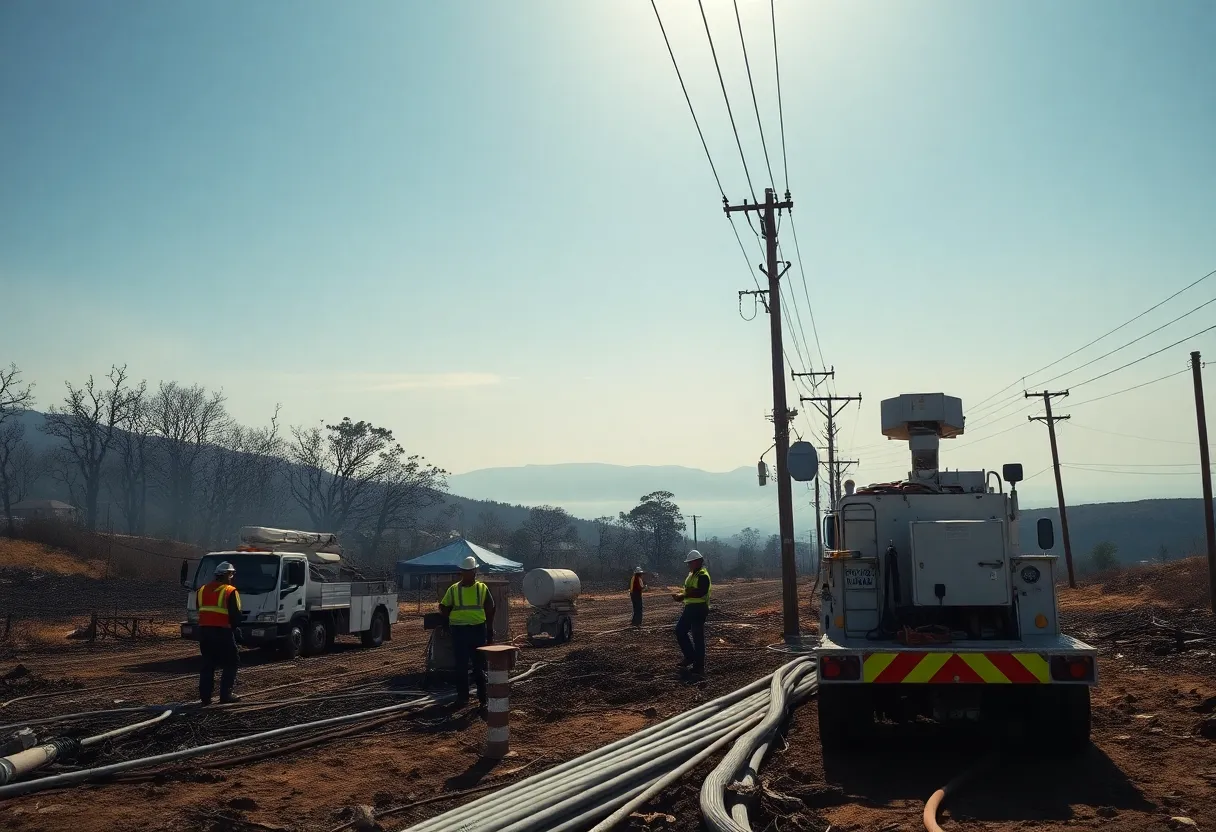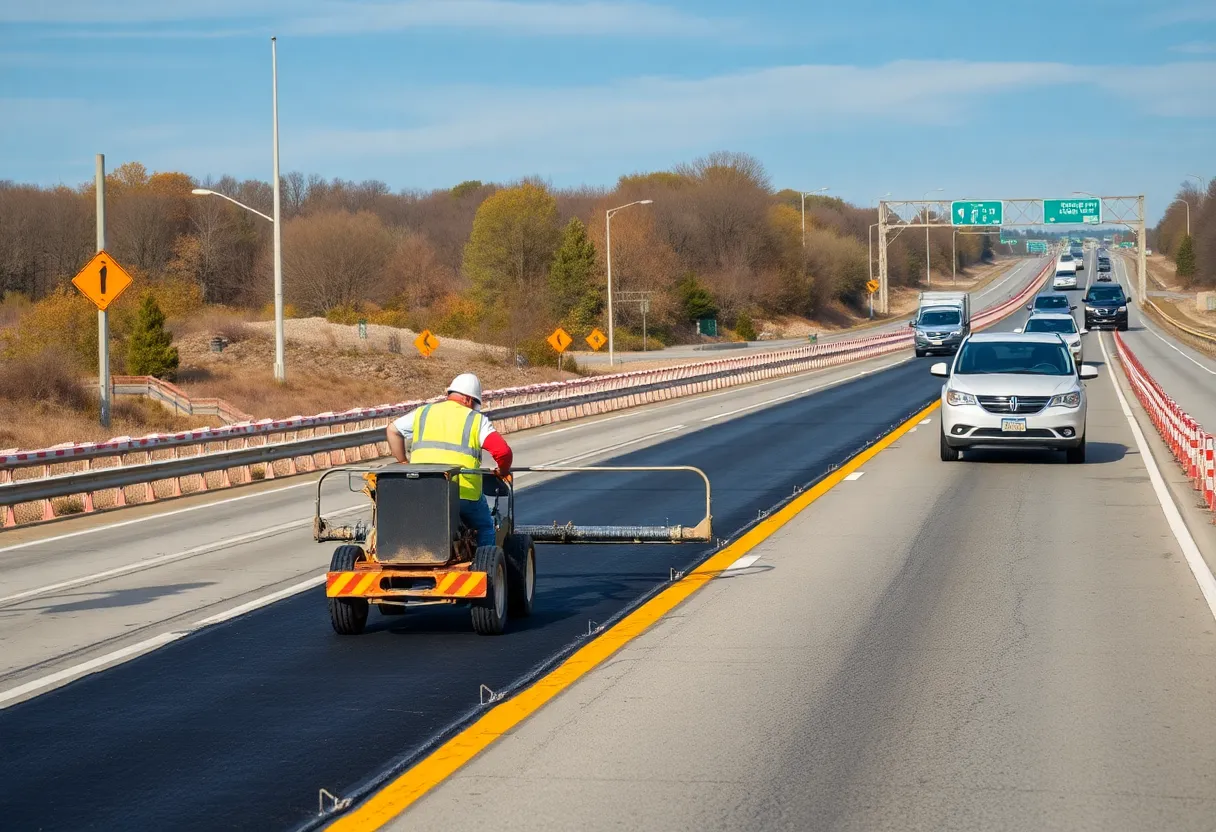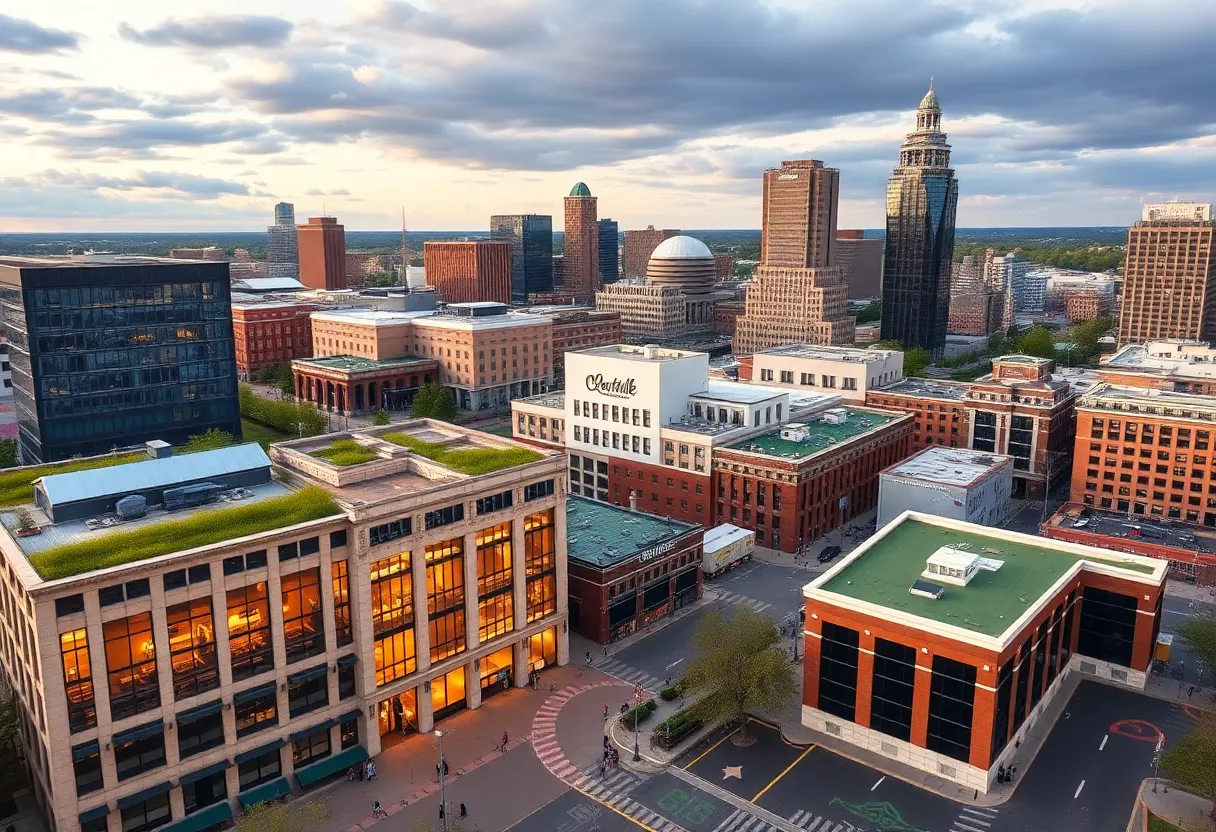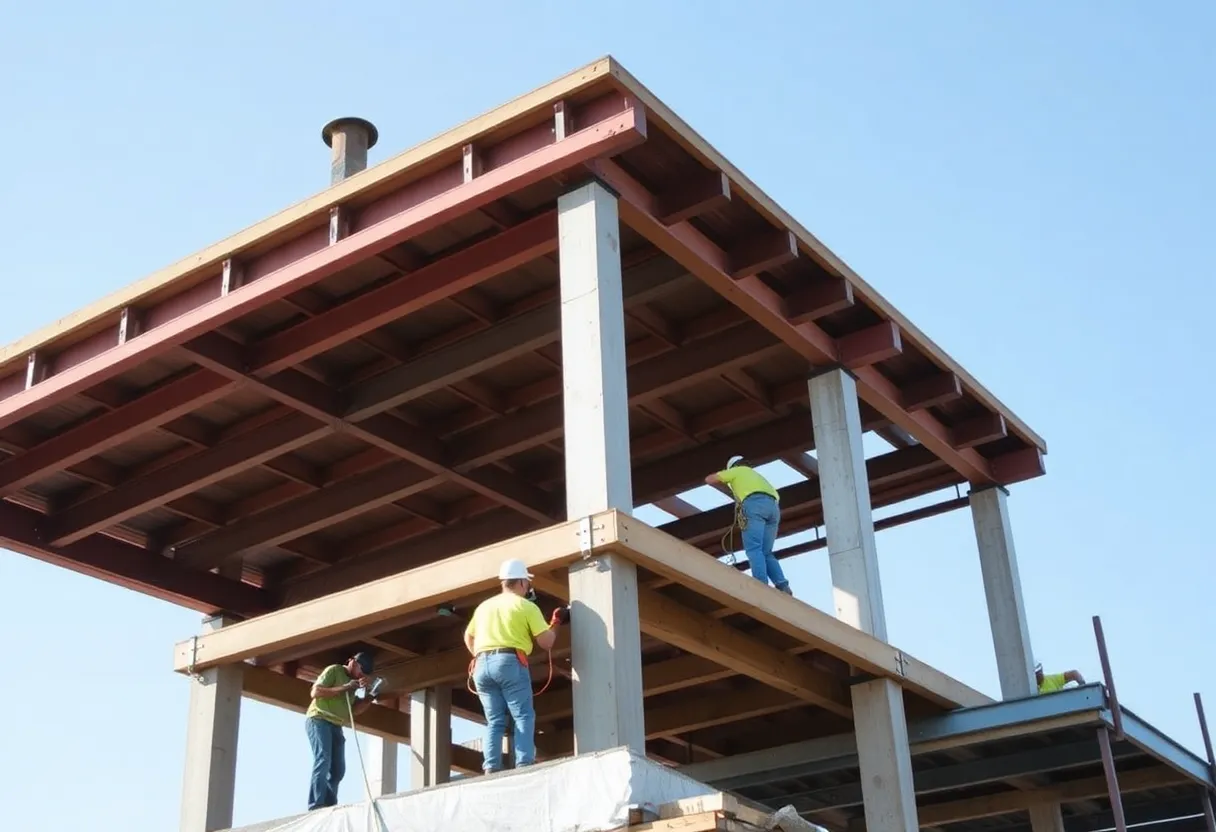California (Eaton and Palisades fire zones), August 16, 2025
News Summary
The governor issued an executive order temporarily suspending state-level CEQA and California Coastal Act reviews for utility work restoring electric, gas, water, sewer and telecommunications infrastructure in the Eaton and Palisades fire zones. The move aims to shorten permitting and environmental review timelines to accelerate utility restoration and encourage undergrounding where feasible. Officials say the order complements earlier waivers, but rebuilding still faces major challenges including skilled labor shortages, materials and transformer supply limits, high construction lending costs, insurance barriers, and local permitting delays. Environmental groups call for balanced safeguards as recovery proceeds.
California suspends two environmental laws for utility work to speed rebuilding after major fires
The governor has issued an executive order temporarily suspending the California Environmental Quality Act and the California Coastal Act for utility companies working to restore electric, gas, water, sewer and telecommunications infrastructure in the burn zones of the Eaton and Palisades fires. The move is aimed at shortening permitting and environmental review timelines so utility systems can be rebuilt faster and residents can return home sooner.
What officials say and what the order does
The measure removes state-level requirements under the two laws for utility work in the designated fire zones, and it is intended to make it easier to relocate lines underground where feasible to reduce future fire risk. The executive order builds on earlier waivers that already exempted some rebuilding of homes and wildfire prevention work from these environmental reviews.
Immediate priorities and recovery timeline
Officials are prioritizing cleanup and temporary housing for tens of thousands displaced by the fires as crews work toward full containment. Over the coming years attention is expected to shift toward long-term rebuilding of communities leveled by the blazes. A deadline has been set for property owners to submit right-of-entry forms to enroll in the federal debris cleanup program, and some multifamily buildings are now eligible for that cleanup assistance.
Scale of damage and slow early progress
The January fires burned nearly 48,000 acres and damaged or destroyed more than 16,000 structures, including thousands of single-family homes, duplexes and apartments. Despite eased rules, rebuilding has been slow in some areas: more than 800 homeowners had applied for rebuilding permits by early July but fewer than 200 applications had been approved, and local permitting can take many weeks on average.
Key hurdles to rebuilding
Experts and industry leaders say suspending environmental reviews does not remove several major constraints:
- Skilled labor shortages: There is a nationwide gap in tradespeople, and tens of thousands of new skilled workers will be needed to meet demand. Programs and philanthropic investments are being directed toward training, but the labor shortfall remains a long-term challenge.
- Materials and supply-chain limits: Certain building materials and electrical transformers are in short supply. Lumber prices have eased in recent years, but potential new tariffs and surges in demand during rebuilding could push prices back up significantly.
- High construction lending costs: Builder lending rates remain elevated in many cases, often in the range of 10% to 12%, making construction financing expensive even as central bank rates have eased.
- Insurance and mortgage barriers: Some insurers have reduced exposure in high-fire-risk areas, pushing homeowners toward limited, costly policies. Where full insurance replacement value is not available, homeowners face obstacles getting mortgages and replacement funds.
- Regulatory and procedural delays: Even with state-level waivers, local permitting, rebuilding standards and code upgrades increase time and cost to reconstruct, especially where structures must be brought up to more recent wildfire-resistant standards.
Undergrounding utilities: benefits and limits
Placing power and other lines underground is seen as a way to reduce fire risk and modernize systems, and some undergrounding projects were already planned before the fires. However, underground installation is substantially more expensive than overhead work, and the executive order chiefly eases permitting — it does not automatically cover the extra construction costs. Major utility providers have begun reestablishing some underground lines where permitted, and state leaders have urged utilities to prioritize undergrounding where practical.
Environmental concerns and safeguards
Environmental groups and some coastal experts caution against broad exemptions, warning that blanket waivers could cause long-term harm to ecosystems and coastal resources. Others argue that CEQA and related regulation already contain exemptions for many rebuilding scenarios, and that most projects do not face litigation under the law. Calls have been made for targeted, balanced approaches that speed reconstruction while protecting waterways, species and long-term climate resilience.
Housing market dynamics and redevelopment
Land values in affected communities remain high, which makes some redevelopment potentially profitable. Some homeowners may accept offers from developers instead of rebuilding, particularly if developer offers exceed insurance payouts. At the same time, decisions not to rebuild can reduce the housing stock in cities already facing shortages.
Workforce and training efforts
Private foundations and nonprofit partners have committed funds to skilled trades training to help close the workforce gap. These programs aim to support career pathways for carpenters, electricians, plumbers and other tradespeople needed for large-scale rebuilding.
Climate and risk context
Fire behavior in recent years has been shaped by unusual swings in precipitation and temperature, increasing wildfire danger. Updated building codes adopted after 2008 require more fire-resistant construction, which raises costs and rebuild time but seeks to reduce future losses.
Bottom line
The executive order removes state-level environmental reviews for utility reconstruction in specific fire zones to speed restoration and encourage undergrounding where feasible. Yet rebuilding faces intertwined limits from labor, materials, financing and insurance. The success of recovery will depend on balancing the immediate need for speed with long-term resilience, adequate funding, insurance solutions and workforce capacity.
Frequently Asked Questions
What exactly was suspended?
The state-level review requirements under the California Environmental Quality Act and the California Coastal Act were temporarily suspended for utility projects restoring electric, gas, water, sewer and telecommunications infrastructure in the designated fire zones.
Does this mean all environmental review is gone?
The suspension applies to specific utility work in the affected burn areas and builds on prior narrow exemptions for some rebuilding and wildfire-prevention work. It is not a blanket repeal of environmental laws statewide.
Will utilities move lines underground?
The executive order encourages undergrounding where feasible and eases permitting, but undergrounding remains more costly than overhead construction. Utilities and communities will weigh costs, timelines and resilience benefits when planning projects.
What are the main barriers to fast rebuilding?
Key barriers include shortages of skilled trades, limited supply of certain materials and transformers, high construction loan rates, insurance market gaps, and local permitting and code compliance timelines.
How will training and workforce shortages be addressed?
Training investments from foundations and nonprofit partnerships are being directed toward trades education to increase the pipeline of skilled workers needed for rebuilding. Long-term workforce needs remain substantial.
Are homeowners required to rebuild?
No. Some homeowners will choose not to rebuild for financial, personal, or logistical reasons; others may sell damaged parcels to developers. The local housing supply and match to community needs will be affected by those choices.
Key features at a glance
| Feature | Details |
|---|---|
| Scope of suspension | CEQA and California Coastal Act reviews waived for utility reconstruction in Eaton and Palisades fire zones |
| Primary goal | Speed restoration of utilities and encourage undergrounding to reduce future fire risk |
| Major challenges | Skilled labor shortages, material shortages, high construction lending rates, insurance limits |
| Damage scale | Almost 48,000 acres burned; over 16,000 structures damaged or destroyed |
| Support measures | Federal debris cleanup eligibility extended; private funding for trades training; prior waivers for rebuilding |
| Potential trade-offs | Faster permitting vs. concerns about environmental impacts and long-term coastal protections |
Deeper Dive: News & Info About This Topic
Additional Resources
- NBC Los Angeles: How Paradise is Being Rebuilt — What SoCal Can Learn Post-Fires
- Wikipedia: Wildfire
- Holland & Knight: Orders Addressing Rebuilding After Southern California Fires
- Google Search: Southern California rebuilding after fires
- CBS News: Southern California faces frustrating, expensive rebuilding process
- Google Scholar: rebuilding after wildfires California
- Los Angeles Times: California suspends environmental laws to speed rebuilding, undergrounding utilities
- Encyclopedia Britannica: California Environmental Quality Act
- Wired: Why it’s taking LA so long to rebuild after the wildfires
- Google News: LA rebuild after wildfires
Author: Construction FL News
The FLORIDA STAFF WRITER represents the experienced team at constructionflnews.com, your go-to source for actionable local news and information in Florida and beyond. Specializing in "news you can use," we cover essential topics like product reviews for personal and business needs, local business directories, politics, real estate trends, neighborhood insights, and state news affecting the area—with deep expertise drawn from years of dedicated reporting and strong community input, including local press releases and business updates. We deliver top reporting on high-value events such as the Florida Build Expo, major infrastructure projects, and advancements in construction technology showcases. Our coverage extends to key organizations like the Associated Builders and Contractors of Florida and the Florida Home Builders Association, plus leading businesses in construction and legal services that power the local economy such as CMiC Global and Shutts & Bowen LLP. As part of the broader network, including constructioncanews.com, constructionnynews.com, and constructiontxnews.com, we provide comprehensive, credible insights into the dynamic construction landscape across multiple states.





